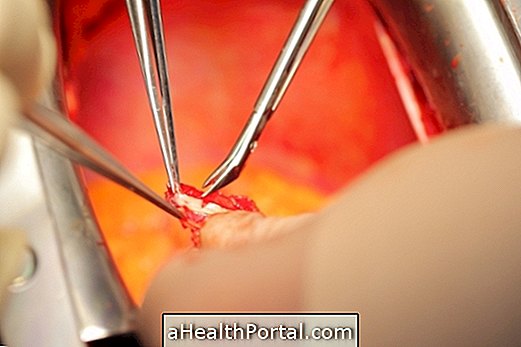Sexual reassignment surgery, transgenitalization, or neofaloplasty, popularly known as gender-change surgery, is done with the objective of adapting the physical characteristics and the genital organs of the transgender person, so that the person can have the body fit for what appropriate for you.
This surgery is performed on people of the female or male gender, and involves complex and long surgical procedures, involving either the construction of a new genitalia, called neopenis or neovagina, as well as the removal of other organs such as penis, breast, uterus and ovaries.
In addition, for this type of procedure to be done, it is necessary for the person to perform a hormonal treatment for the adequacy of the characteristics, in addition to the psychological monitoring, so that it is possible to determine that that new physical identity is suitable for the person and there is no regrets.

Where is it done?
Gender-shifting surgery can be done by SUS since 2008, however, as the waiting queue can last for years, many people choose to do the procedure with private plastic surgeons.
How is it done?
Before performing transgender surgery, some important steps should be followed:
- Follow-up with psychologist, psychiatrist and social worker;
- Socially assuming the gender you want to adopt;
- Performing hormonal treatment to acquire female or male characteristics, guided by the endocrinologist for each case.
These stages prior to surgery last about 2 years, and are very necessary because they are a step towards the physical, social and emotional adaptation of the person to this new reality, since it is recommended to be sure of the decision before the surgery, which is definitive
Surgery is preceded by general anesthesia, and lasts for about 3 to 7 hours, depending on the type and technique used by the surgeon.
Moving from female to male
There are 2 types of surgical techniques for the transformation of the female sexual organ into male:
Metoidoplasty
It is the most used and available technique, and consists of:
- Hormone treatment with testosterone causes the clitoris to grow, getting larger than the average female clitoris;
- Incisions are made around the clitoris, which is released from the pubis, becoming freer to move;
- Vaginal tissue is used to increase the length of the urethra, which will stay in the inner part of the neopen;
- The tissue of the vagina and the labia minora are also used to coat and shape the neopen;
- The scrotal sac is made from the large labia and implants of silicone prostheses to simulate the testicles.
The resulting penis is small, reaching about 6 to 8 cm, however this method is quick and able to preserve the natural sensitivity of the genitalia.
Phalloplasty
It is a more complex, expensive and little available method, so many people who search for this method end up looking for professionals abroad. In this technique, grafts of skin, muscles, blood vessels and nerves from another site of the body, such as the forearm or thigh, are used to create the new genital organ with larger size and volume.
- Care after surgery : to complete the process of masculinization, it is necessary to remove the uterus, ovaries and breasts, which can be done during the procedure or can be scheduled for another time. Generally, the sensitivity of the region is maintained, and intimate contact is released after about 3 months.

Male to female gender change
For the transformation of male genitalia into female, the commonly used technique is the modified penile inversion, which consists of:
- Made incisions around the penis and scrotal sac, defining the region in which the neovagina will be made;
- Part of the penis is removed, preserving the urethra, skin and nerves that give sensitivity to the region;
- The testicles are removed, preserving the skin of the scrotal sac;
- A space is opened to fight the neovagina, with about 12 to 15 cm, using the skin of the penis and the scrotal sac to cover the region. The hair follicles are cauterized so as to not grow hair in the region;
- The rest of the skin of the scrotal sac and foreskin are used for the formation of the vaginal lips;
- The urethra and the urinary tract are adapted so that the urine leaves through an orifice and the person can urinate sitting;
- The glans is used for the formation of the clitoris, so that the sensation of pleasure can be maintained.
To allow the new vaginal canal to remain viable and not close, a vaginal template is used, which can be changed to larger sizes over the weeks for neovaginal dilation.
- Care after surgery: Physical activities and sexual life are usually released after about 3 to 4 months after surgery. Usually it is necessary to use specific lubricants for the region during sexual intercourse. In addition, it is possible for the person to have follow-up with a gynecologist, for guidelines and assessments of the skin of the neovagina and urethra, however, as the prostate remains, it may also be necessary to have consultations with the urologist.
In addition, after any plastic surgery, it is recommended to eat light meals, to observe the rest period recommended by the doctor, and to use medicines prescribed to relieve pain, such as anti-inflammatories or analgesics, to facilitate recovery. Check out the essential care after a plastic surgery.


























